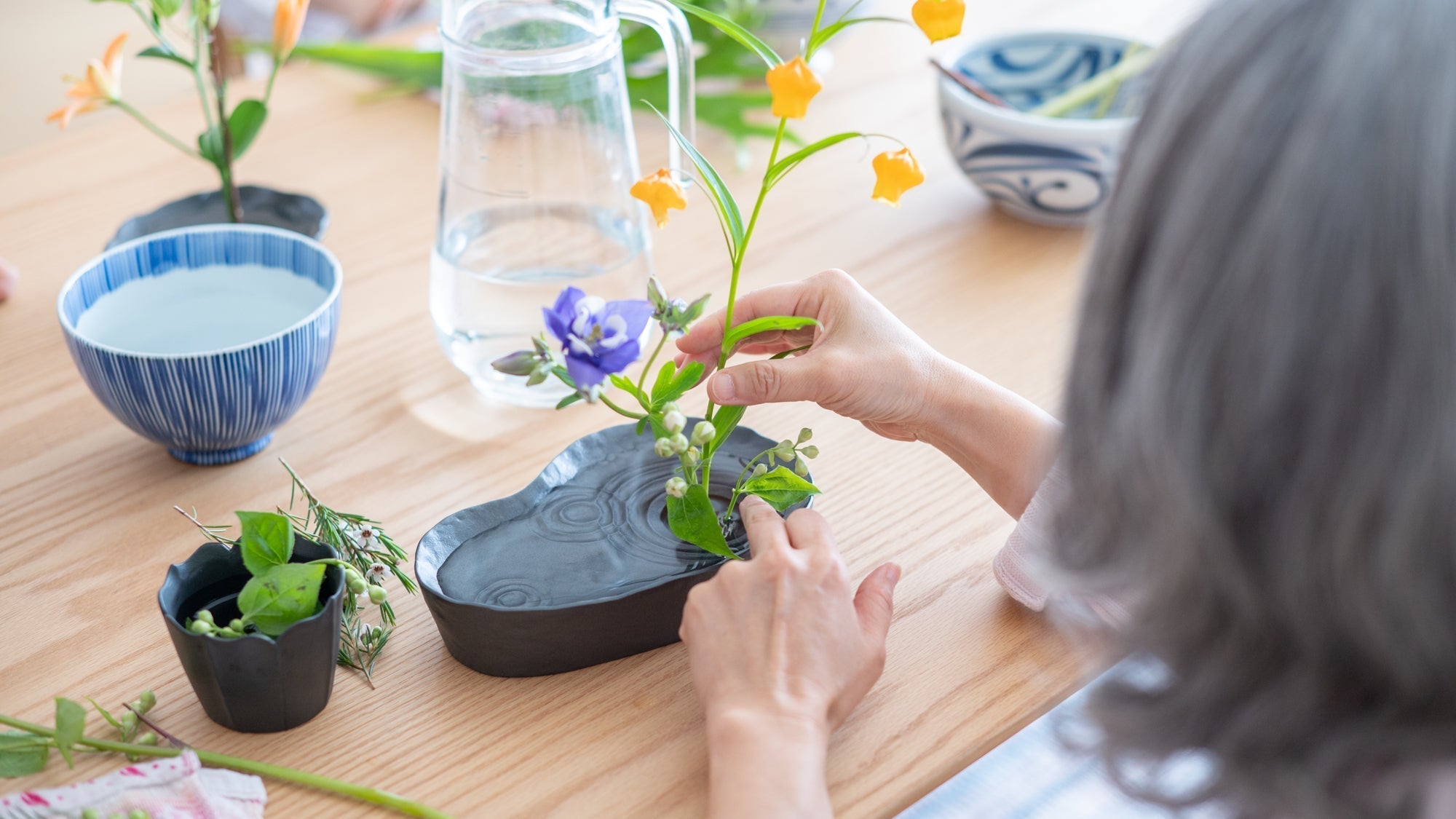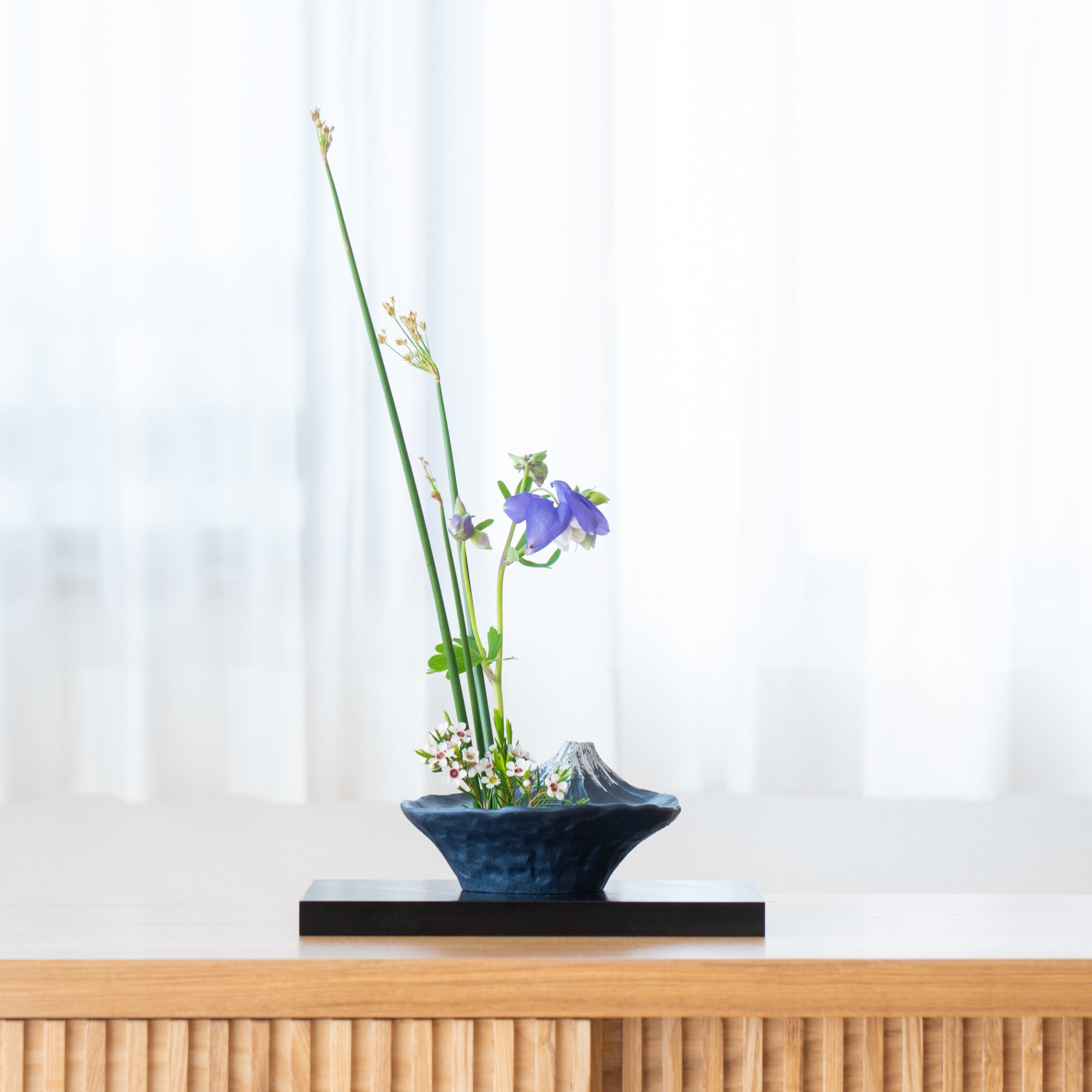

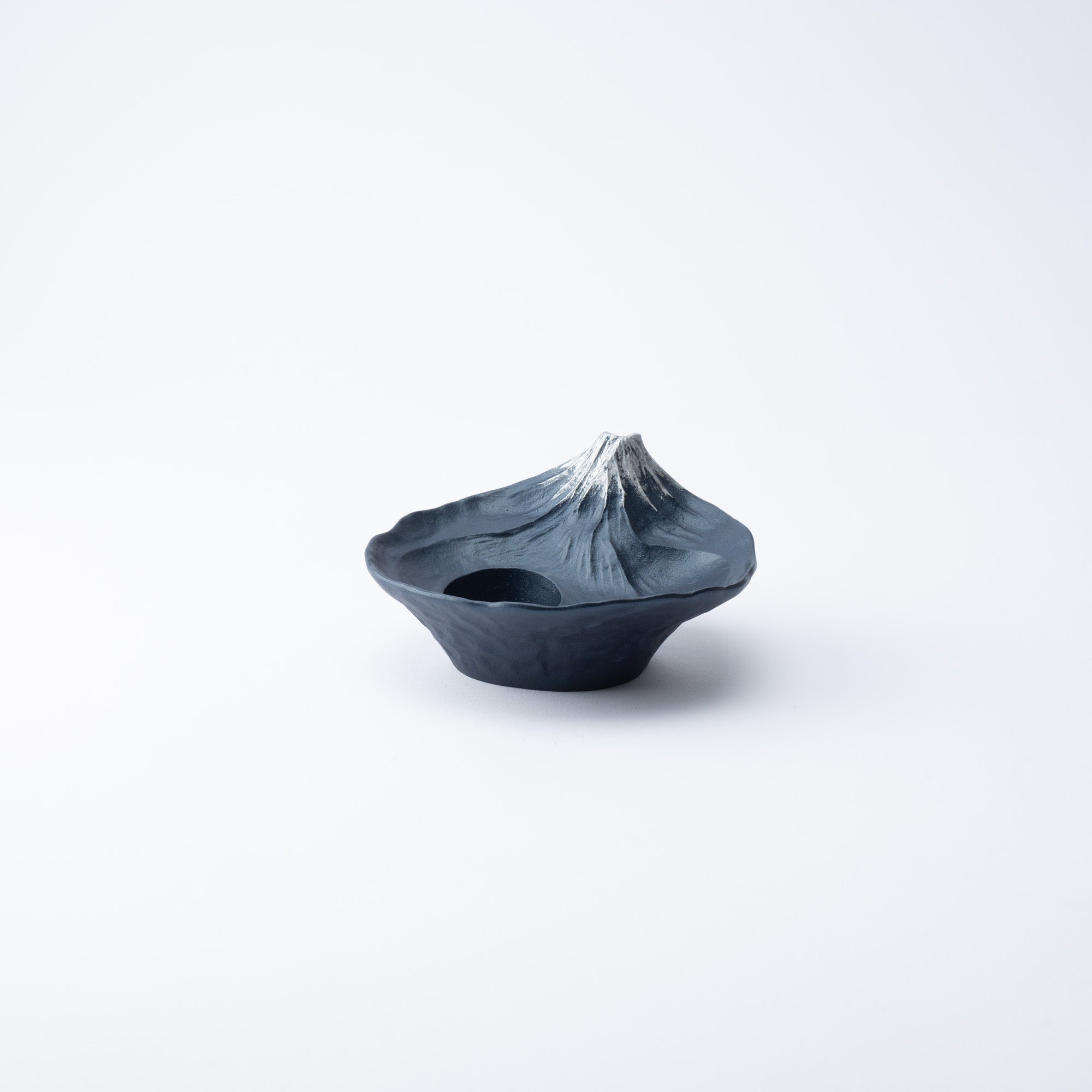
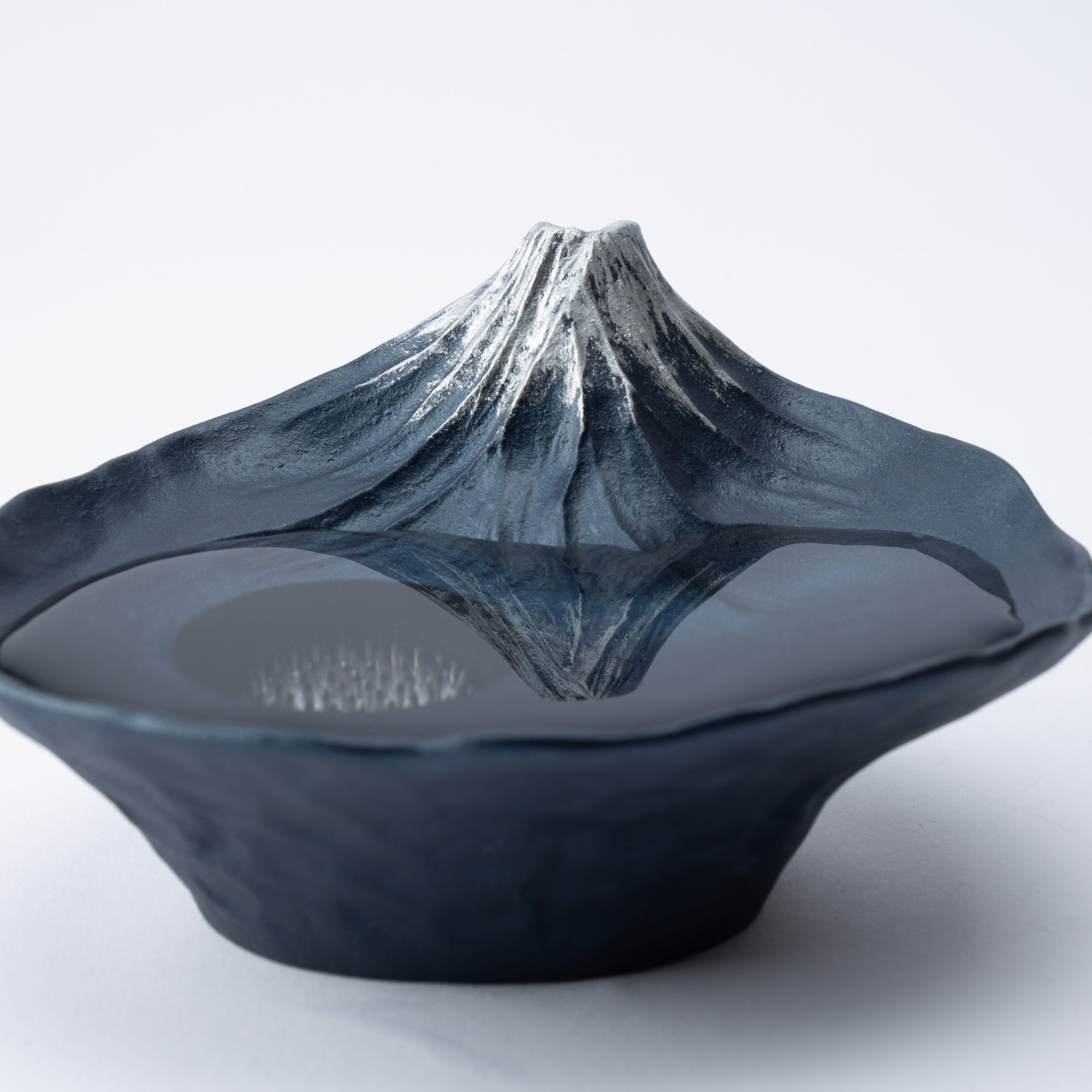
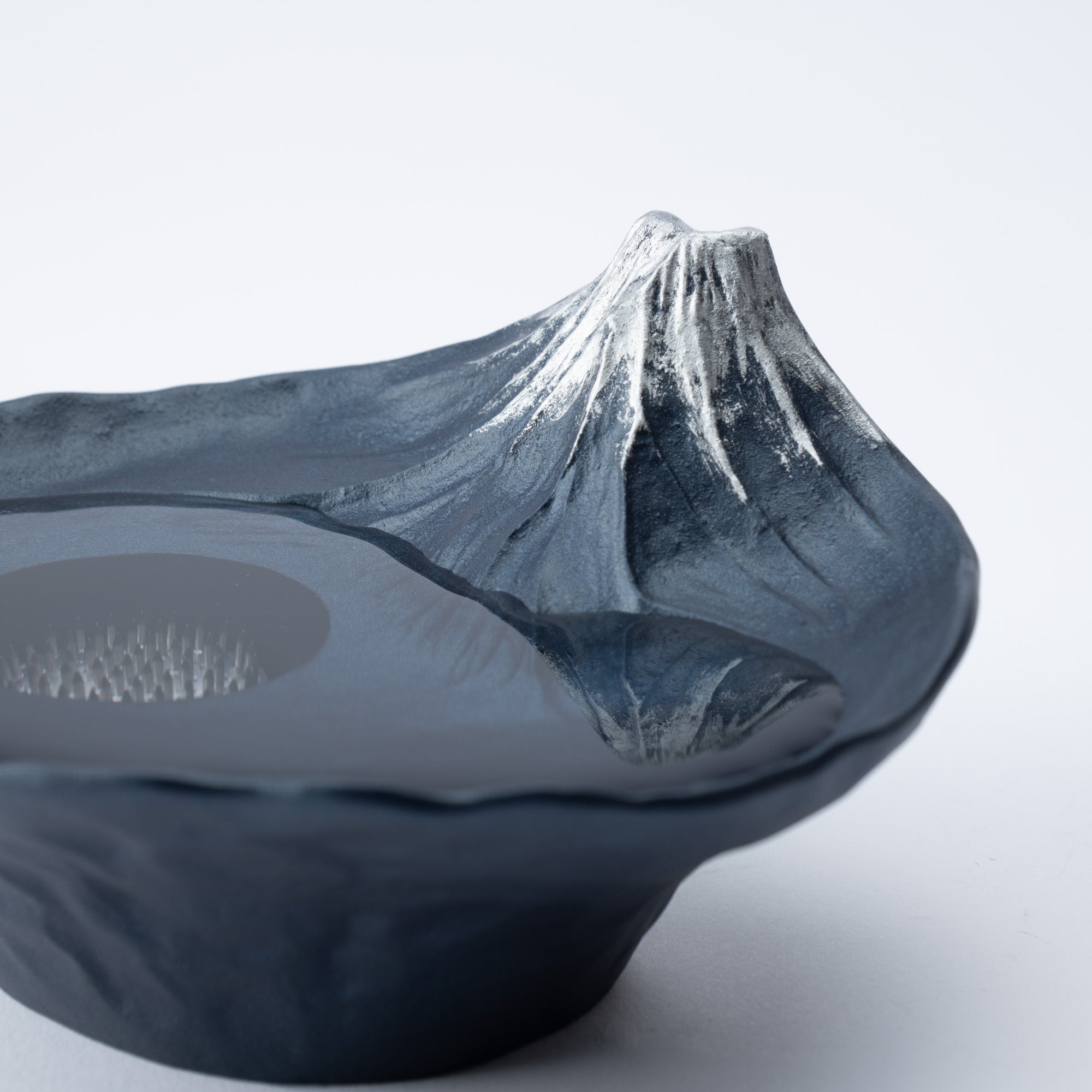
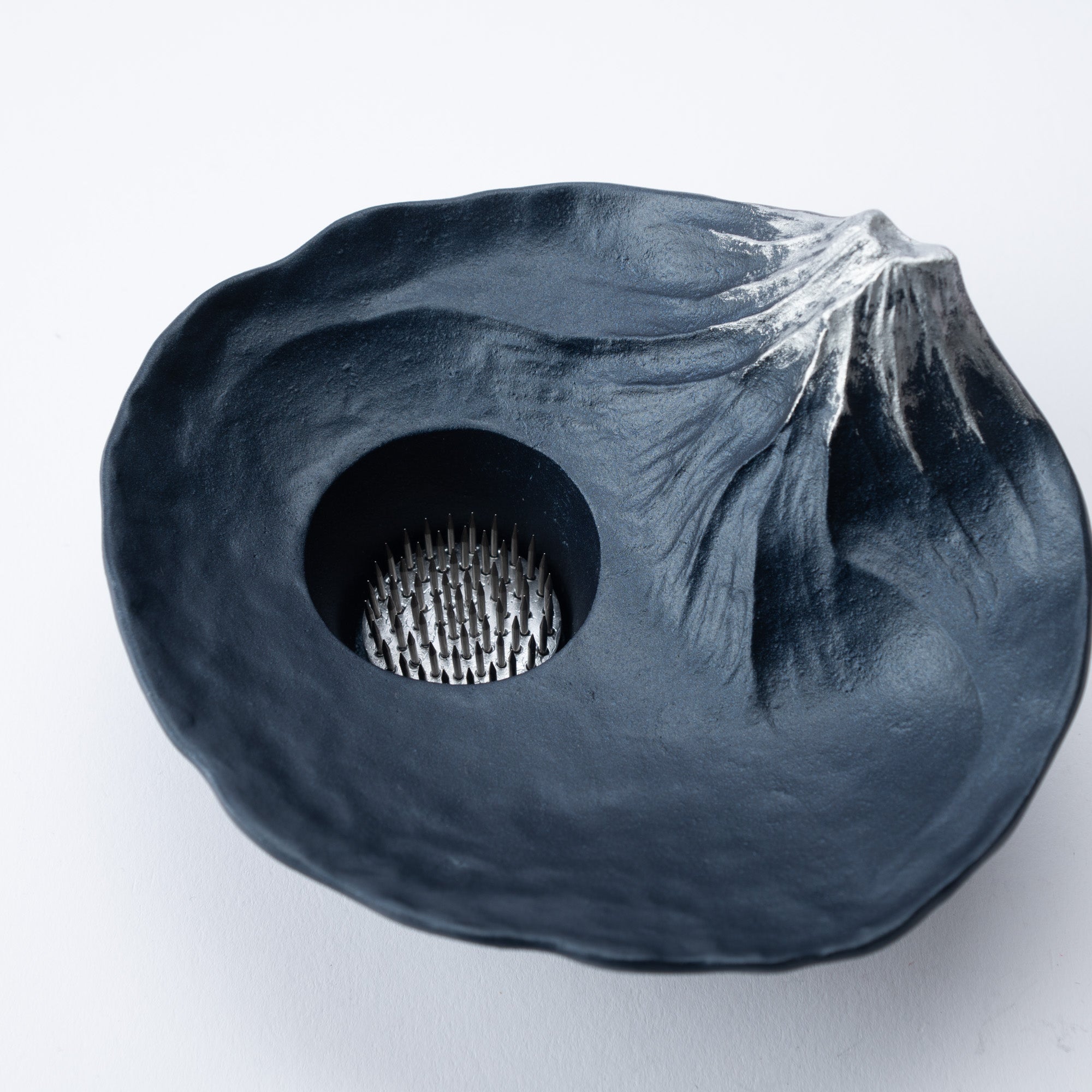
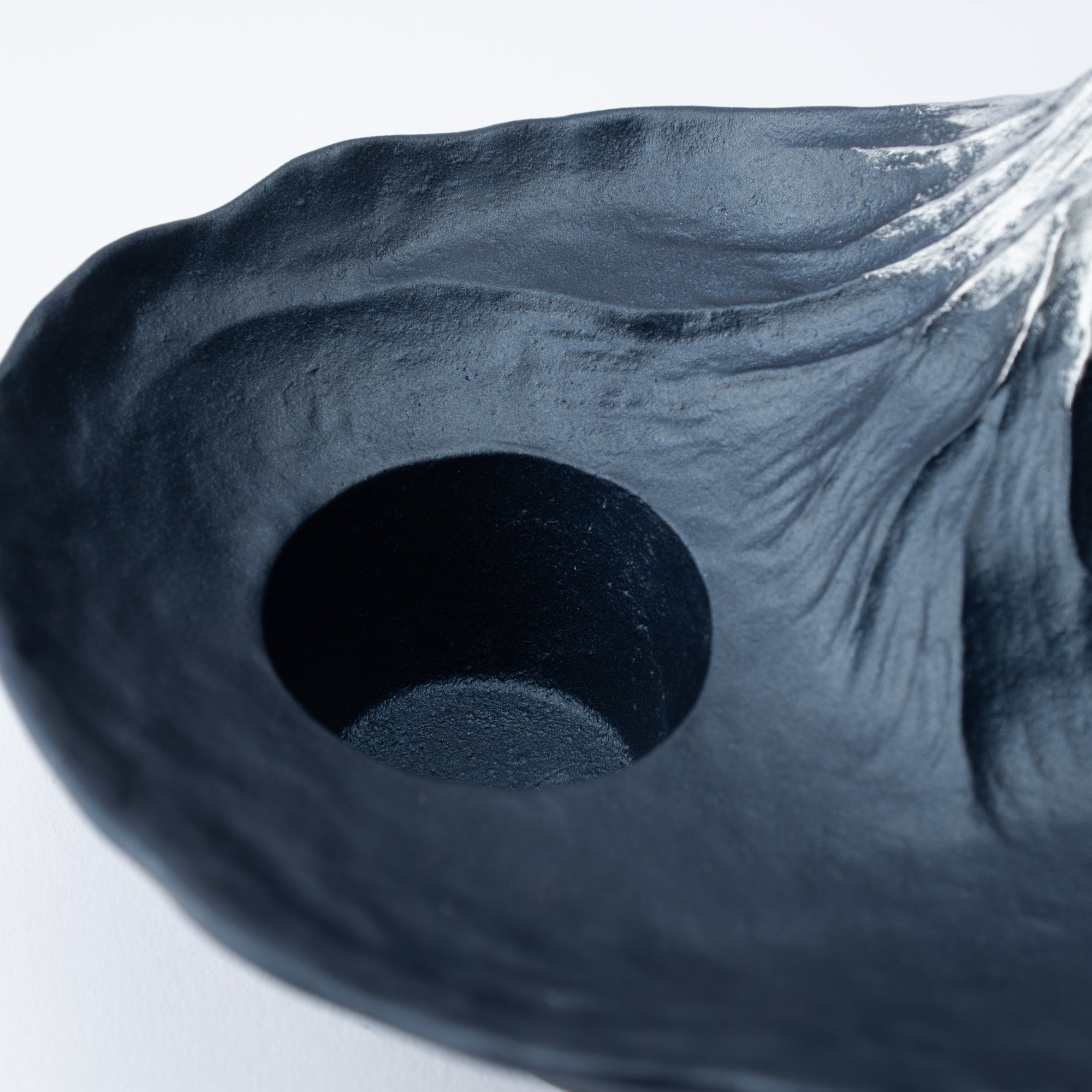
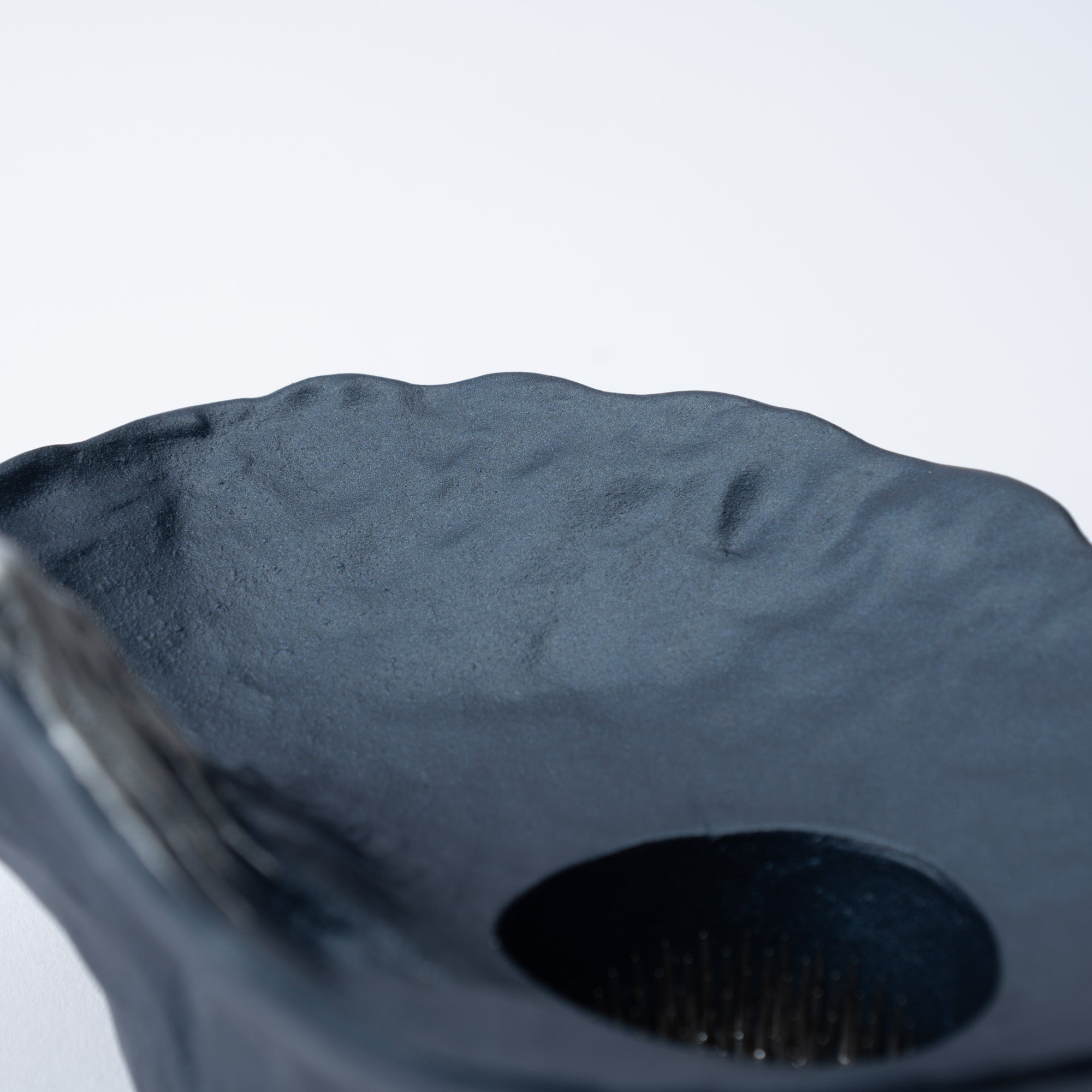
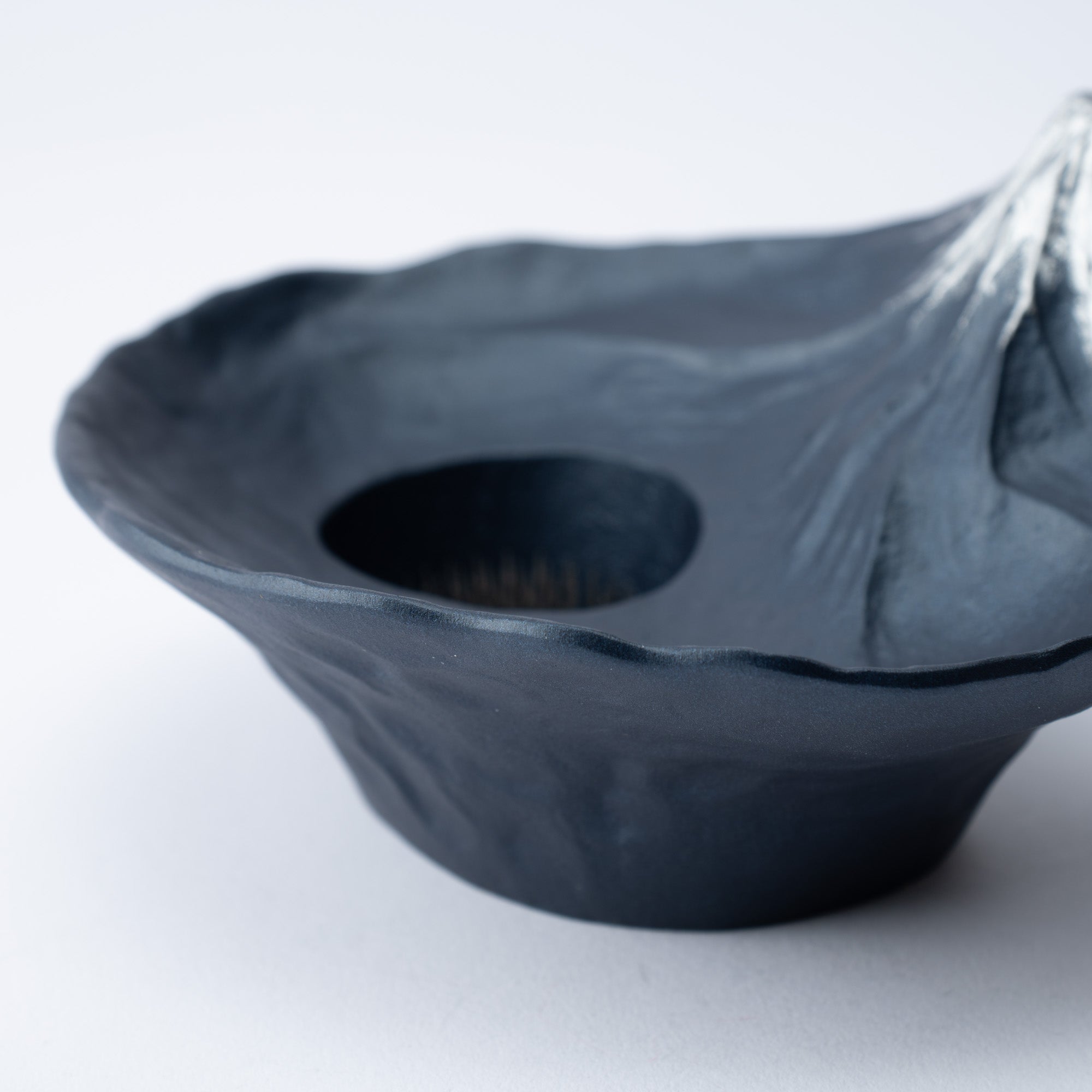
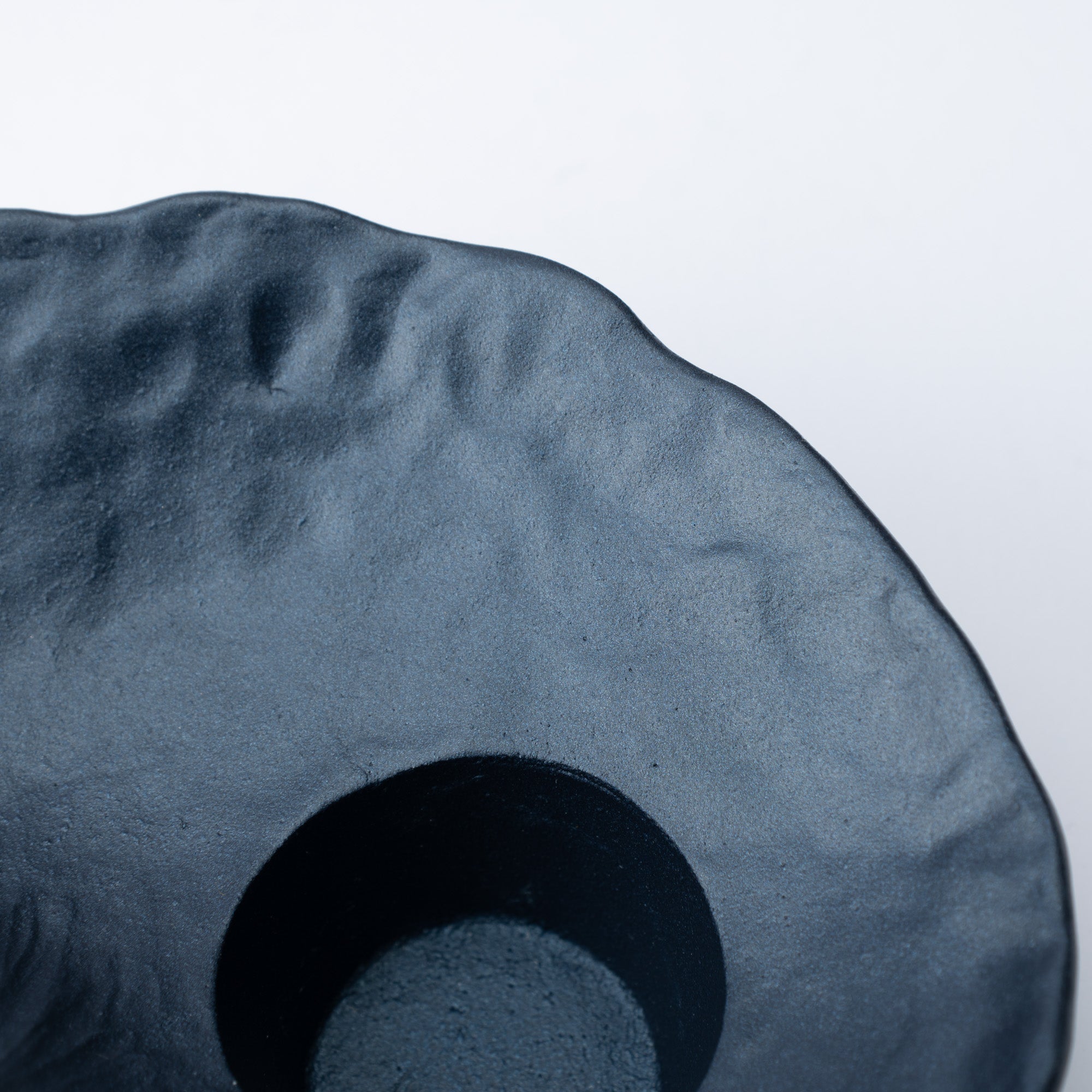
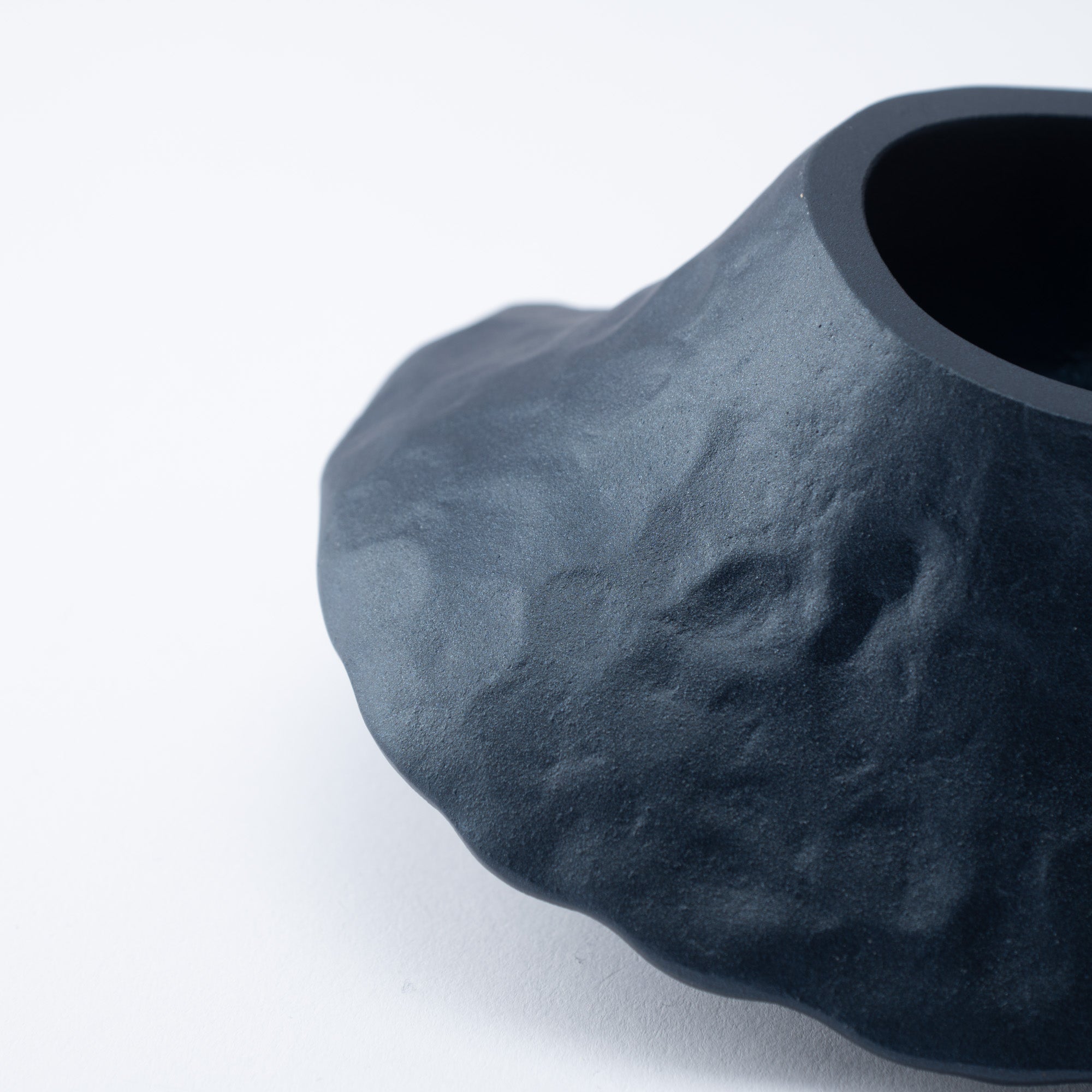
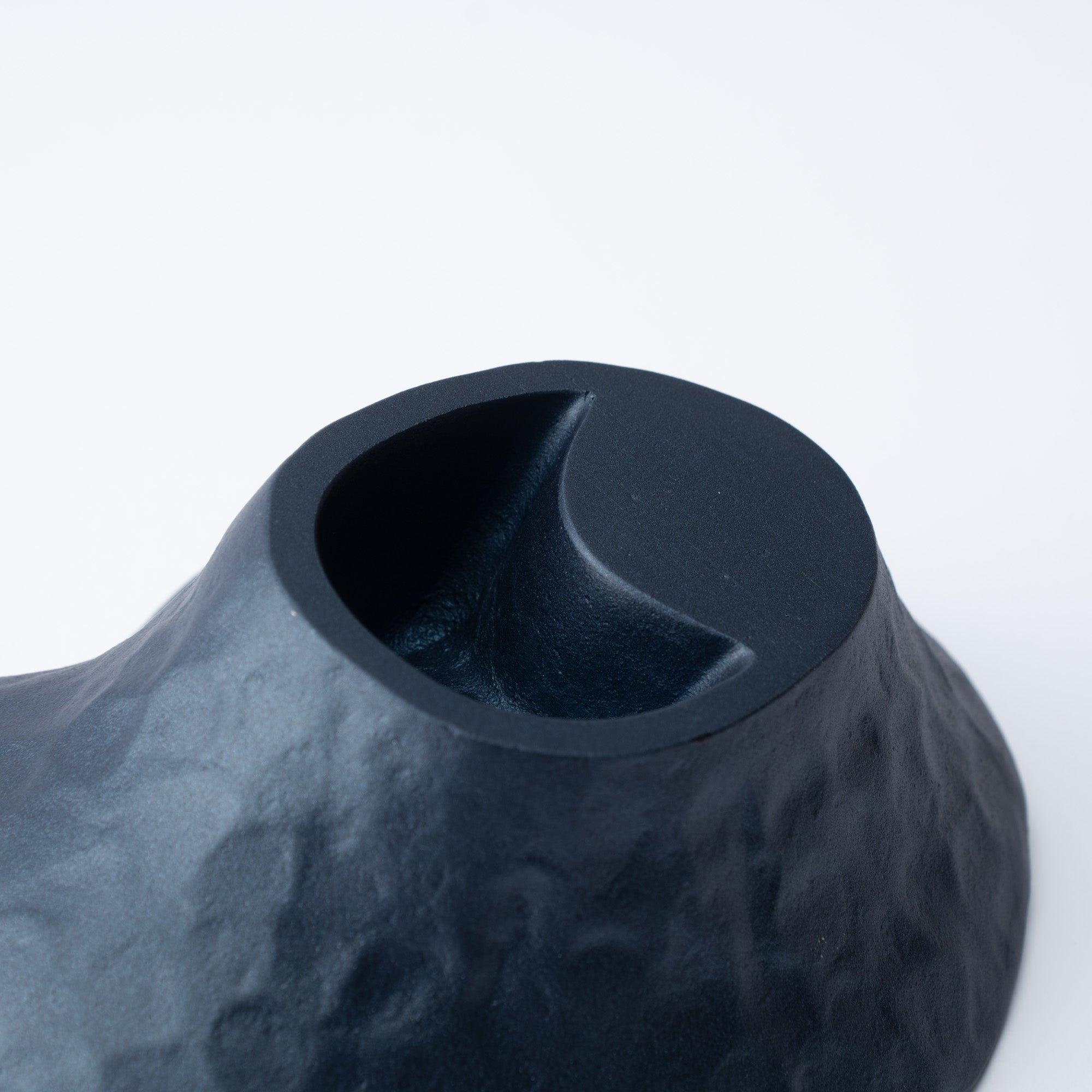
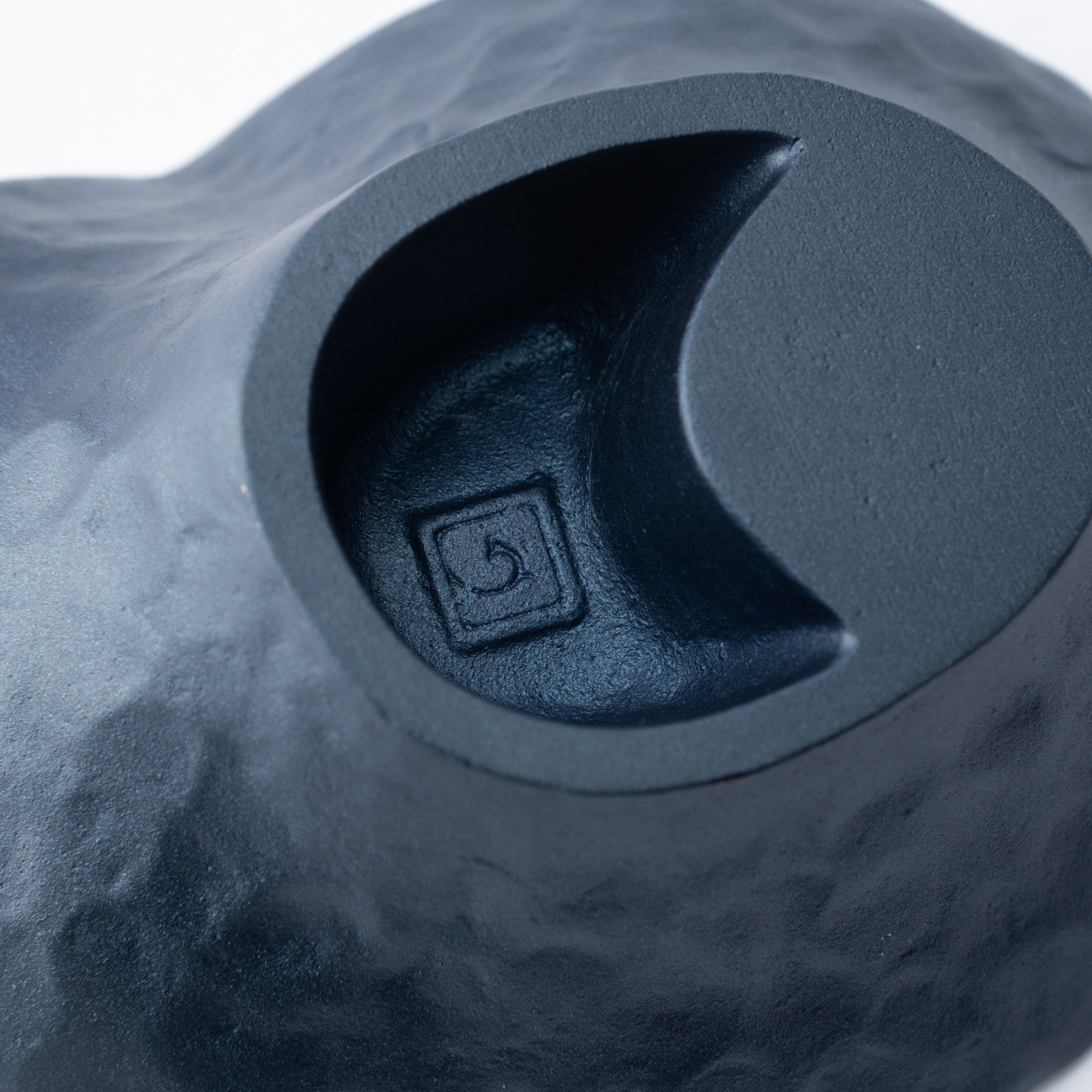
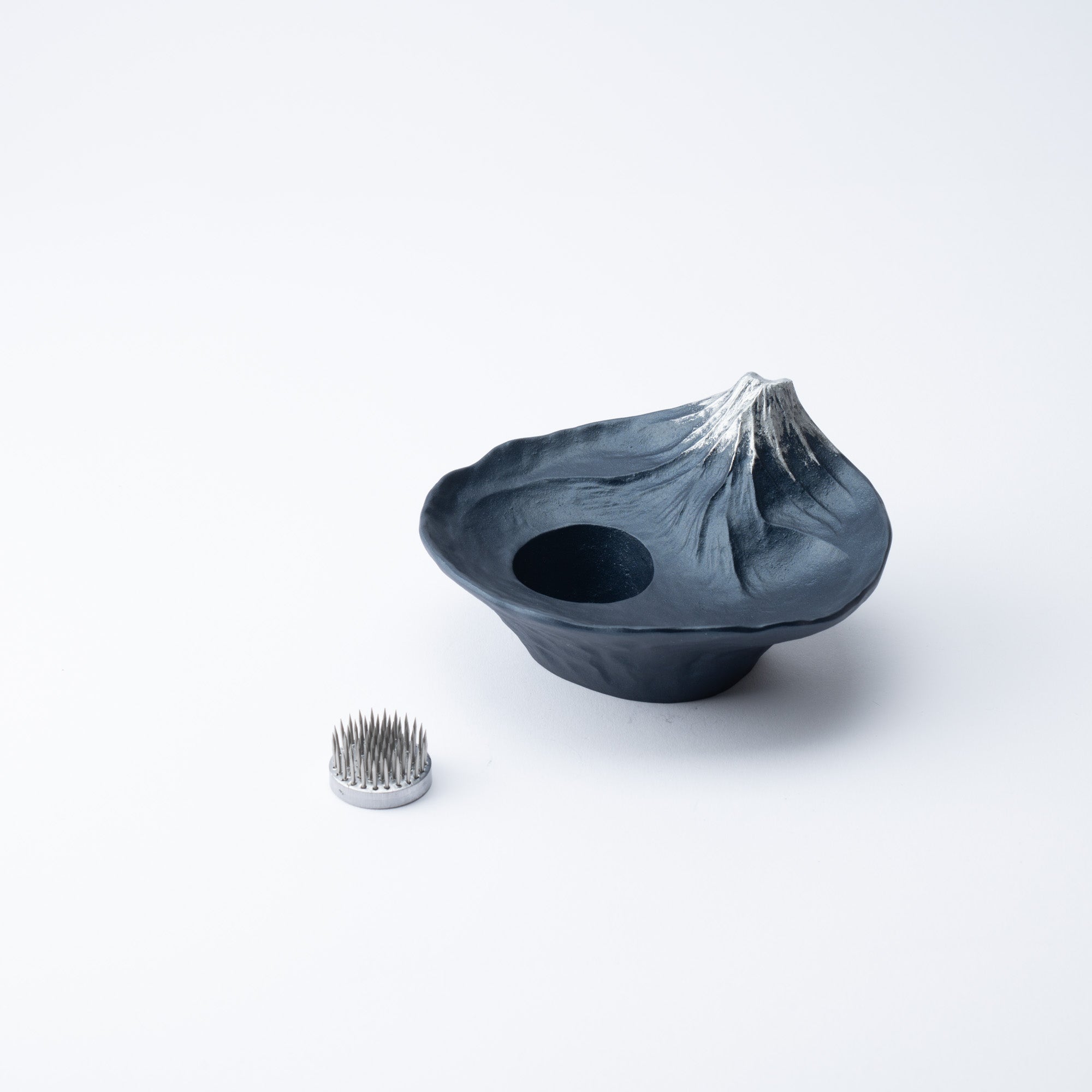
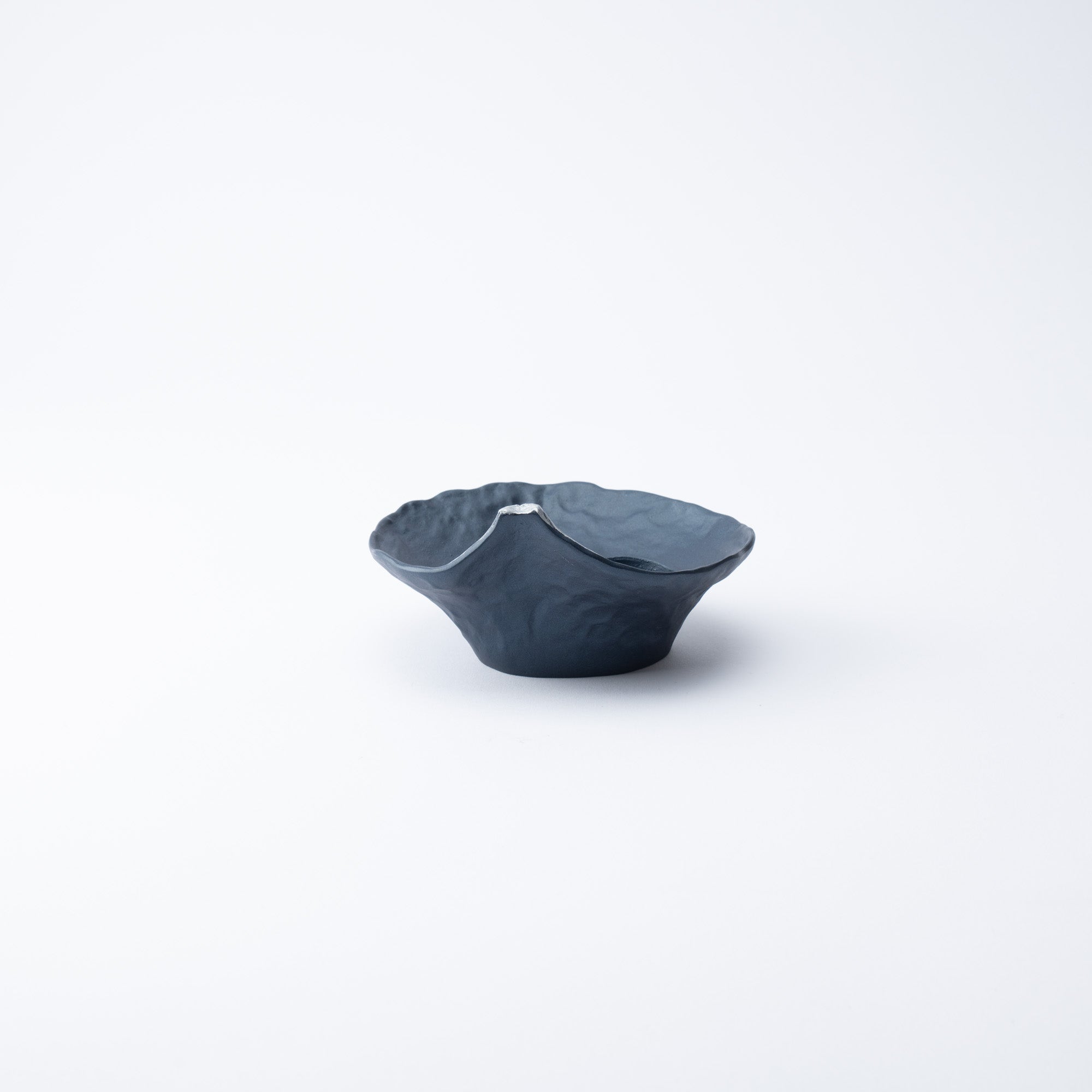
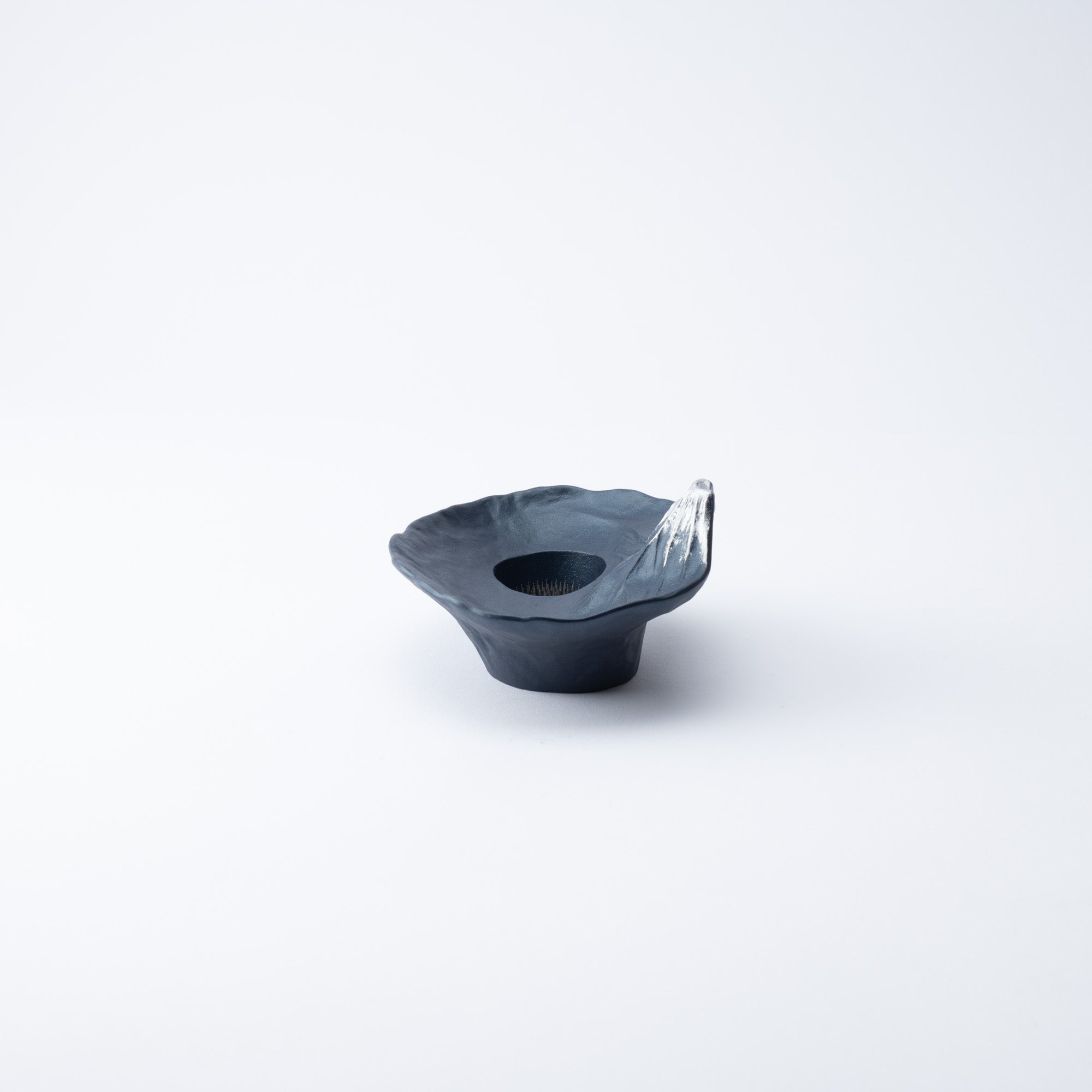
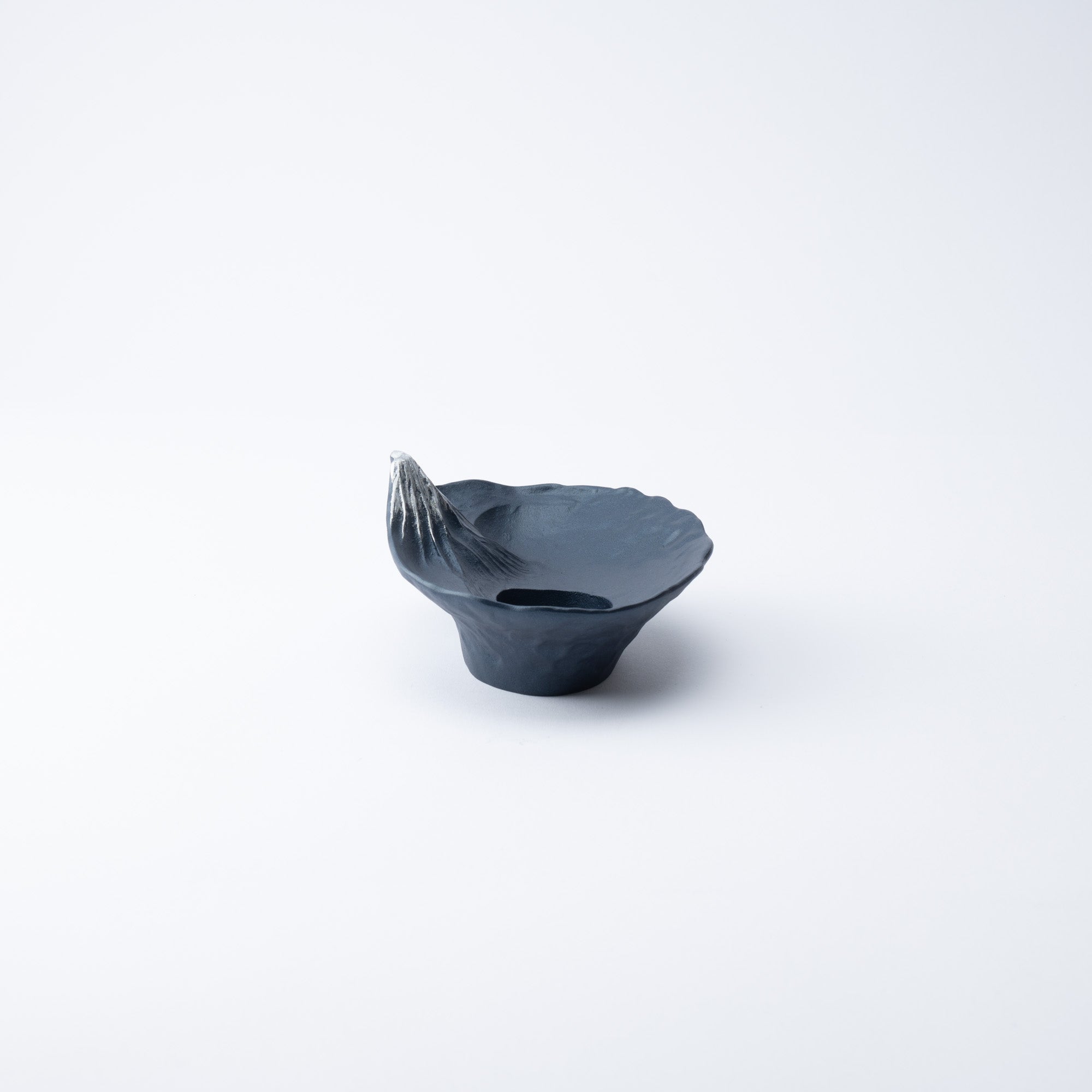
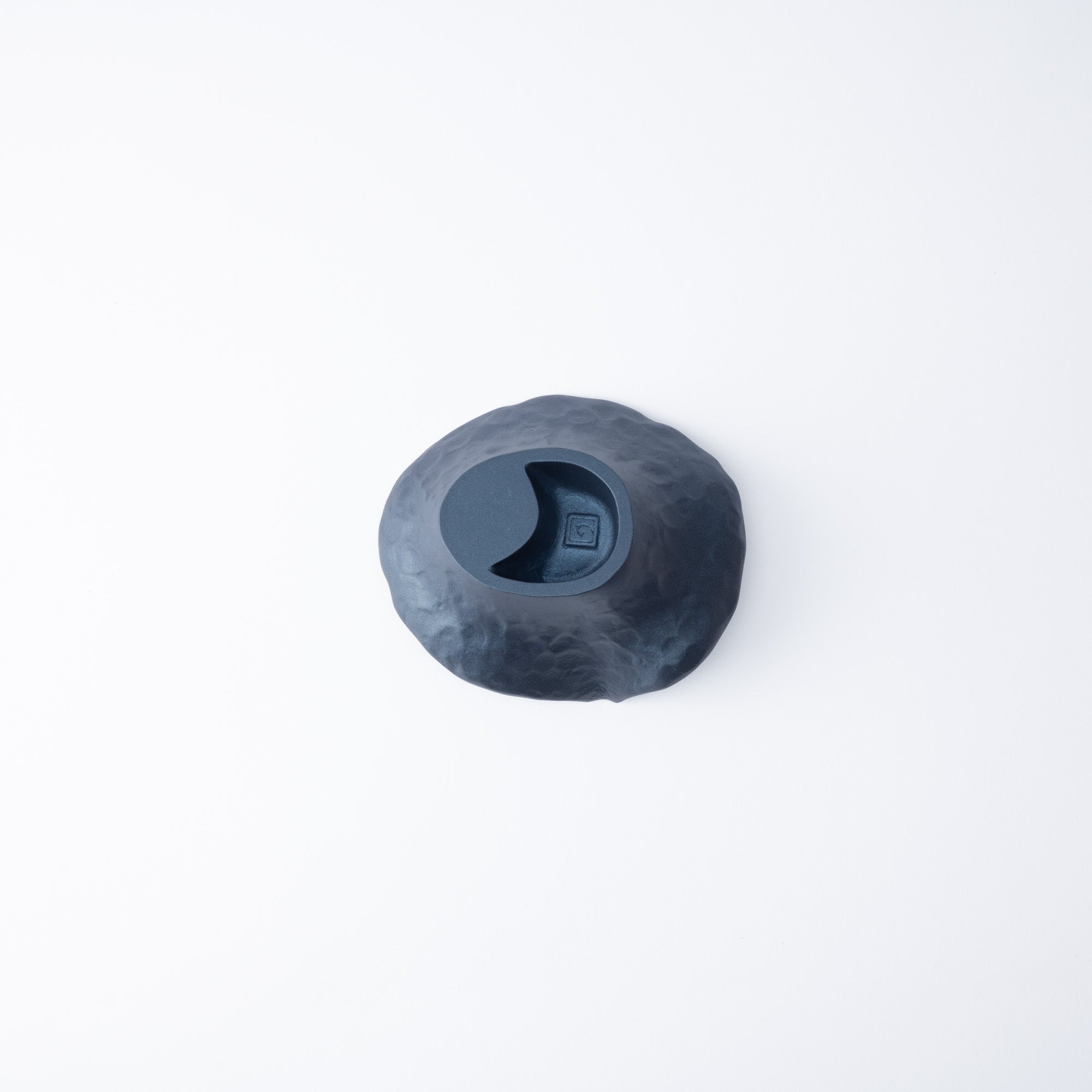
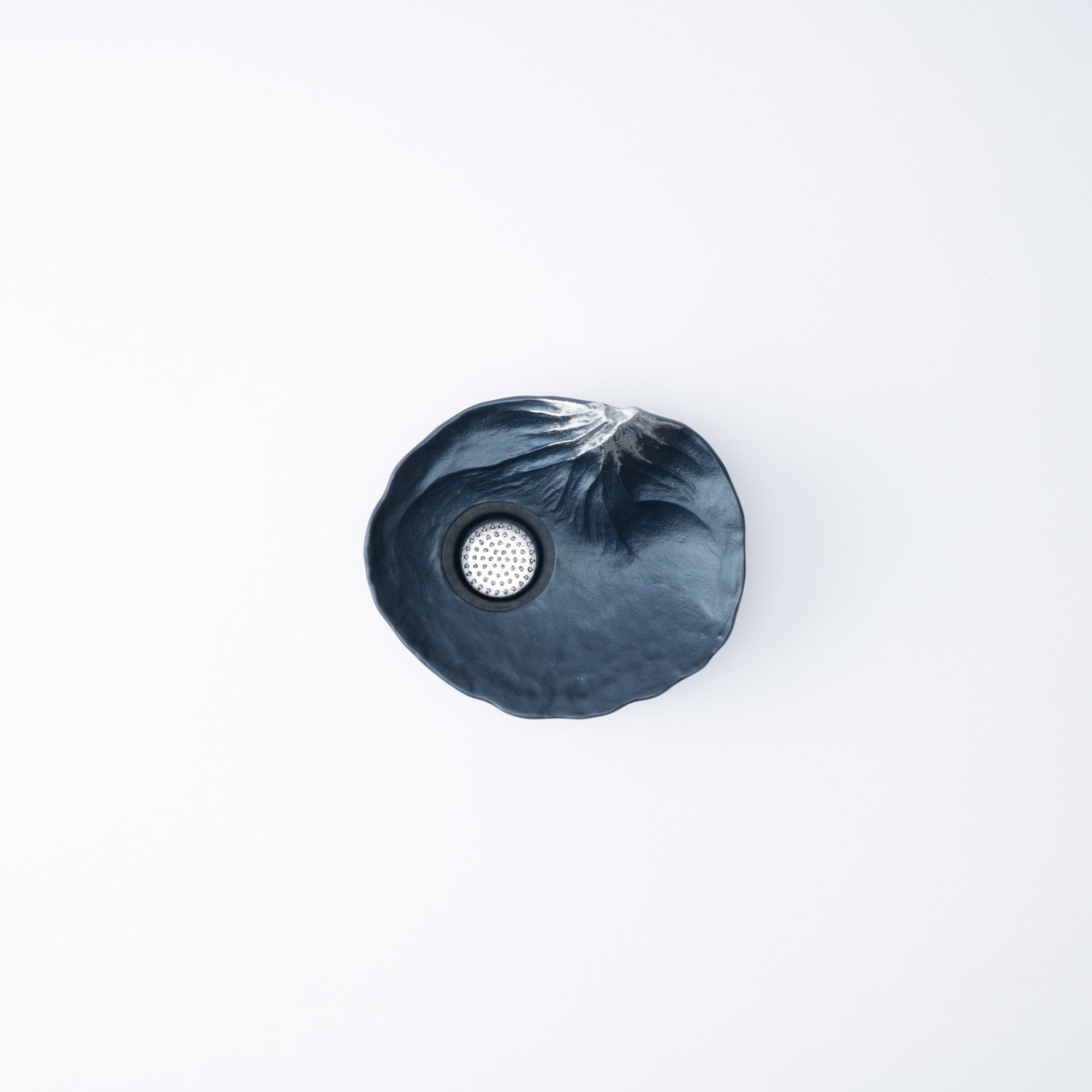
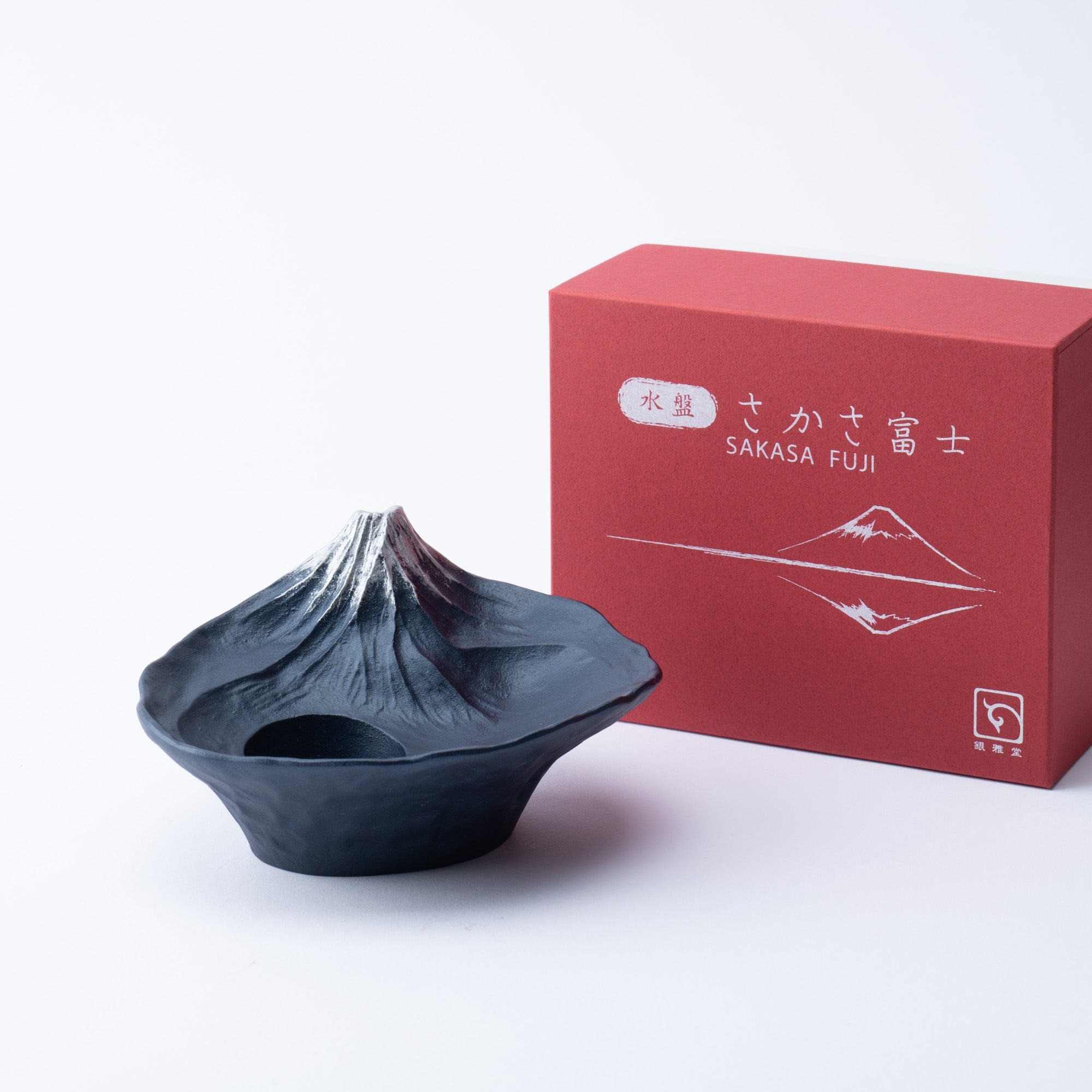
Blue Reverse Mt. Fuji Ikebana Flower Vase
Estimated Shipping Widget will be displayed here!
Mt. Fuji, the pride of Japan, is the motif of this unique flower vase.
On days of clear skies, the rare spectacle of a reversed Mt. Fuji, known as sakasa Fuji in Japanese, can be marveled on lakes and rice paddies near its base and is considered a symbol of good fortune due to its rarity. This rare picturesque sight is wonderfully recreated on the surface of the water in this beautiful vase.
The blue Mt. Fuji, known as ao-Fuj in Japanese, is a depiction of Mt. Fuji in the summer. The intricate slopes are finely recreated with the silver color of aluminum and the dark blue hue of the baked acrylic paint coating on aluminum beautifully enhances the metallic peak.
This ikebana, Japanese-style flower arrangement, vase comes with a kenzan, a metallic flower frog, to set flowers and greenery. The small kenzan can be easily used by those new to ikebana. The water beneath the floral arrangement reflects a reversed Mt. Fuji and provides a peaceful backdrop to the floral display.
Each piece is handmade using the sand casting technique where a metallic base is made by pouring hot metal into a hardened sand mold. This traditional technique has been handed down in Takaoka City, the heartland of metalwork, for over 400 years.
DETAILS
| Quantity | 1 vase, 1 kenzan |
| Size |
[Vase] L 15cm (5.9 in)x W 12.5 cm (4.9 in)x H 8 cm (3.1 in) [Flower cup] D 3cm (1.1 in) x Depth 3.2 cm (1.3 in) [Kenzan] D 3 cm (1.2 in) x H 1.5 cm(0.6 in) |
| Capacity | 50 ml (1.7 fl oz) |
| Material | Aluminum |
| Package Type | Paper box |
Maker / Brand
Experience the timeless beauty of traditional Takaoka copperware with Gingado.
For over 400 years, Takaoka City in Toyama Prefecture has been at the forefront of Japan's metal industry and has become the heartland of Takaoka copperware. Gingado is one the most well-known and respected manufacturers of this traditional craft and stands renowned for their intricate artistry.
Bring traditional craftwork to your home with beautiful items that blend Japanese culture with modernity from Gingado.
Crafts
Takaoka City in Toyama Prefecture is one of the leading metal industry towns in Japan with a 400-year history. It is known for its metal crafts using copper as the main material, which now accounts for about 90% of the total production in Japan. There are various techniques used to produce Takaoka copperware, including hammering, casting, and engraving. Craftsmen in Takaoka are highly skilled and use their skills to create beautiful and functional objects ranging from tea ceremony utensils to decorative vases.
Notes
Choose options




















Estimated Shipping Widget will be displayed here!
Flower Vases
Explore our curated collection of authentic Japanese vases, available in all materials from masterfully hand-painted porcelain to elegant glass, and coming in all sizes, from delicate little vases that hold a single bloom to large creations that can handle bountiful bouquets.
Perfect for fresh blooms or as standalone home decor, these vases will highlight your favorite flowers and complement your interior style.
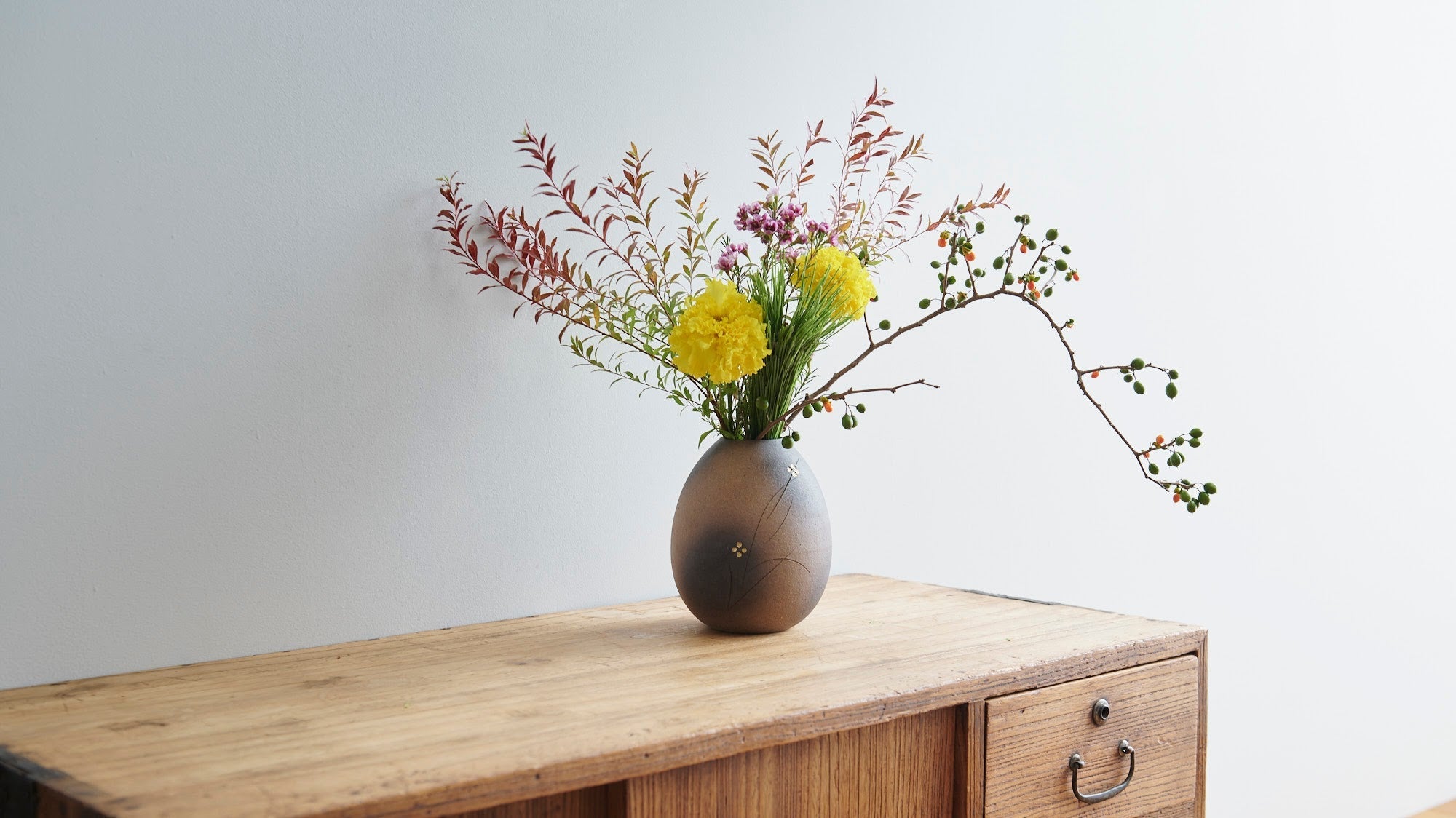
A Step-by-Step Guide for Ikebana Beginners Part 1
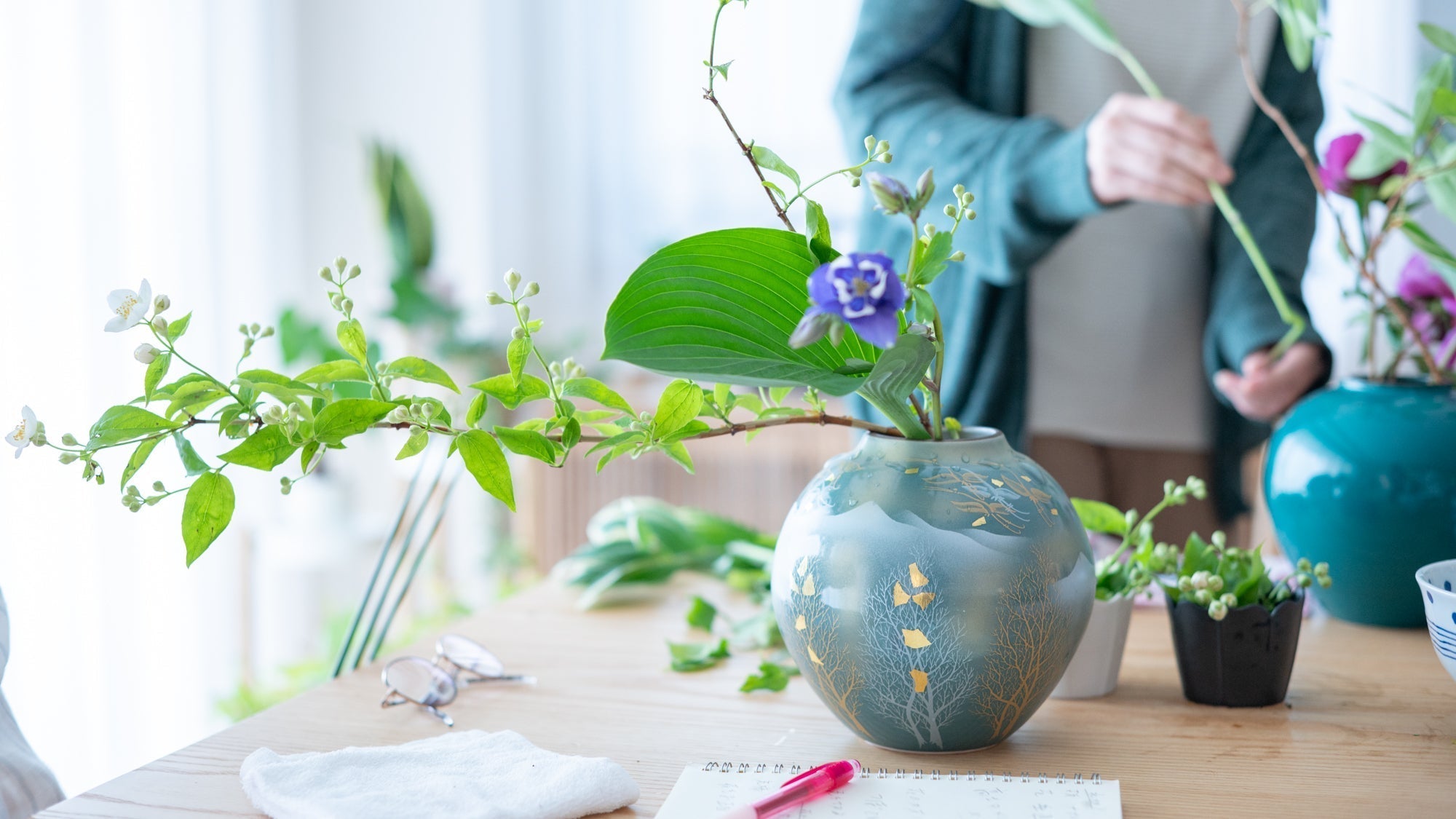
A Step-by-Step Guide For Ikebana Beginners - Part 2
